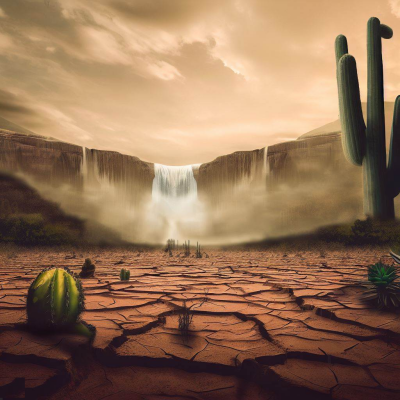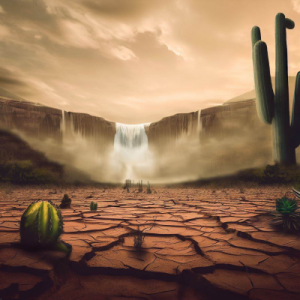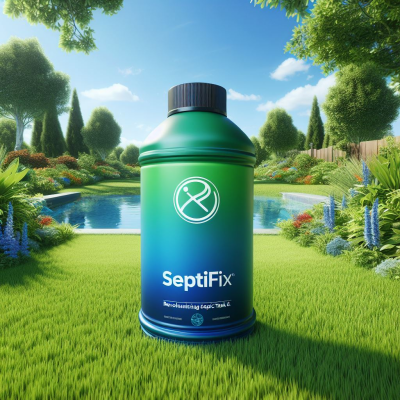Imagine this: You find yourself in the midst of a 100-year drought, with no access to traditional water sources like wells or pipes. Fear not, because the Israeli army’s groundbreaking invention can extract moisture from the air, providing up to 50 gallons of fresh water per day.
In this article, we delve into the significance of tapping into nature’s secret water reservoir for survival during a water crisis. Wilderness survival specialist John Gilmore shares his expertise on finding alternative water sources, ensuring your self-sufficiency and survival in both home and emergency situations.
Key Takeaways
 The Israeli army’s invention for generating fresh water in desert conditions is capable of extracting moisture from the air, enabling the generation of large amounts of water in desert regions.
The Israeli army’s invention for generating fresh water in desert conditions is capable of extracting moisture from the air, enabling the generation of large amounts of water in desert regions.- A 100-year long drought predicted by NASA is currently underway and is expected to be more devastating than the 1930s Dust Bowl crisis, affecting the entire continent from Canada to Mexico.
- Relying on mainstream water sources during a continental drought will make people vulnerable and dependent on external sources, potentially leading to water scarcity and anarchy.
- The need for a constant, reliable, portable, off-grid water source is crucial in water crisis situations, and the Israeli army’s invention offers up to 50 gallons of water per day, ensuring self-sufficiency and survival.
What is it?
So, what is this invention that the Israeli army has come up with to provide fresh water in the desert? Well, the significance of this invention cannot be overstated.
In desert regions or areas with water scarcity, traditional methods like digging wells or using pipes are simply not feasible. That’s where these innovative techniques come into play. The Israeli army’s invention relies on extracting moisture from the air to generate vast amounts of fresh water.
By tapping into nature’s secret reservoir, they have developed a portable, off-grid solution that can provide up to 50 gallons of water per day. This invention ensures self-sufficiency and survival in water crisis situations, making it invaluable for those living in arid environments.
The techniques used to extract water from the air have the potential to revolutionize water access in desert regions and beyond.
Israeli Army’s Invention
Utilize the Israeli army’s invention to generate fresh water even in the middle of the desert. This groundbreaking technology offers numerous benefits and can be implemented in various ways.
The key benefit of this invention is the ability to provide fresh water in arid environments where traditional methods are ineffective. By extracting moisture from the air, vast amounts of water can be generated, ensuring a constant and reliable supply.
The implementation of this technology requires the installation of specialized equipment that utilizes advanced condensation techniques. These systems can be set up in desert regions or areas facing water scarcity, providing self-sufficiency and survival in water crisis situations.
The Israeli army’s invention offers a practical solution to the pressing issue of water scarcity, revolutionizing the way we access and utilize this precious resource.
Impending 100-year Drought
If you’re not prepared, the impending 100-year drought predicted by NASA will have devastating consequences. This drought, more severe than the 1930s Dust Bowl crisis, has been ongoing for over a decade and is expected to impact the entire continent from Canada to Mexico.
Traditional water sources will become useless, leaving people vulnerable and dependent on government assistance. Stockpiling water is not a long-term solution. To adapt and prepare, you need a constant, reliable, portable, off-grid water source.
The Israeli army’s invention, which extracts water from the air, provides up to 50 gallons of water per day. It offers independence from dried-out wells and limited rain harvesting, making it suitable for desert regions or areas with water scarcity. By tapping into nature’s secret water reservoir, you can ensure self-sufficiency and survival in water crisis situations.
Mainstream Water Sources
To ensure your independence and safety during a continental drought, it is vital to find alternative sources for your water needs. Water scarcity challenges can be daunting, but there are alternative water solutions that can help you overcome these challenges.
Consider the following options:
- Rainwater harvesting: Collect and store rainwater for future use.
- Greywater recycling: Treat and reuse water from sinks, showers, and laundry.
- Desalination: Remove salt and other impurities from seawater to make it drinkable.
- Fog harvesting: Capture moisture from fog and convert it into usable water.
- Underground water storage: Utilize underground tanks or cisterns to store water.
Exploring these alternative water solutions can provide you with a reliable and sustainable water source, ensuring your independence and safety during a continental drought.
Need for Reliable Water Source
When facing a continental drought, finding a constant and reliable water source is crucial for your independence and safety. Dependence on mainstream water sources will leave you vulnerable and at the mercy of government assistance or water suppliers.
In such dire circumstances, it is essential to have a portable, off-grid water source that can provide you with a steady supply of water. The benefits of off-grid water sources, such as the Israeli army’s invention that extracts water from the air, cannot be overstated. They offer up to 50 gallons of water per day, ensuring self-sufficiency and survival in water crisis situations.
Additionally, water conservation becomes even more important during a continental drought, as every drop counts. By tapping into nature’s secret water reservoir and utilizing off-grid water sources, you can secure your access to water and protect your independence.
Tapping into Nature’s Secret Reservoir
Discovering alternative sources of freshwater can be a game-changer in ensuring your independence and security during a continental drought. One such method is atmospheric moisture harvesting, a water extraction technique that taps into nature’s secret reservoir.
By harnessing the moisture present in the air, this innovative method provides a constant and reliable source of freshwater. Atmospheric moisture harvesting works by condensing the moisture in the air and collecting it for use. This technique is particularly useful in areas with water scarcity or in desert regions where traditional water sources may not be sufficient.
John Gilmore’s Presentation
By implementing atmospheric moisture harvesting, you can secure a constant and reliable source of freshwater, ensuring your independence and security during a continental drought. Here are three practical applications and survival techniques that can help you tap into nature’s secret reservoir:
-
Portable Atmospheric Water Generators (AWGs): These compact devices use condensation technology to extract moisture from the air and convert it into drinkable water. With an AWG, you can have a reliable source of freshwater wherever you go, whether it’s in the wilderness or during a disaster situation.
-
Rainwater Harvesting Systems: Collecting rainwater is a simple and effective way to ensure a sustainable water supply. Install rain barrels or underground storage tanks to capture rainwater from your roof, and use it for various purposes like gardening, cleaning, and even drinking with proper filtration.
-
Solar Water Distillers: Harnessing the power of the sun, solar water distillers can purify contaminated water by evaporating it and condensing the vapor into clean drinking water. These devices are particularly useful in areas with limited access to clean water sources.
Frequently Asked Questions
How does the Israeli army’s invention extract moisture from the air to generate fresh water in desert conditions?
The Israeli army’s technology for desert water extraction utilizes a process called atmospheric water generation. It extracts moisture from the air by using a combination of cooling and condensation techniques.
First, the air is cooled to its dew point, causing the moisture to condense into water droplets. Then, the condensed moisture is collected and filtered to remove impurities, resulting in fresh, drinkable water.
This innovative method allows for the generation of large quantities of water in desert conditions, providing a reliable source of hydration in water-scarce environments.
What are some practical steps individuals can take to tap into alternative water sources during a water crisis?
To tap into alternative water sources during a water crisis, you can start with rainwater harvesting. Set up a system to collect and store rainwater from roofs or other surfaces.
Additionally, consider groundwater recharge methods such as building infiltration basins or using permeable surfaces. These techniques help replenish underground water supplies.
Can the impending 100-year drought be mitigated or prevented by implementing water conservation measures?
Water scarcity solutions and the importance of water conservation are crucial in mitigating or preventing the impending 100-year drought. Implementing water conservation measures, such as reducing water usage, promoting efficient irrigation systems, and investing in water-saving technologies, can help conserve water resources.
Additionally, implementing policies for rainwater harvesting and water reuse can also contribute to water conservation efforts. These measures are essential in ensuring a sustainable and resilient water supply, especially in the face of a long-lasting drought.
Are there any potential health risks associated with relying on the Israeli army’s invention for drinking water in desert regions?
While the Israeli army’s invention provides a valuable solution for generating fresh water in desert regions, it is important to consider potential health risks associated with relying on this technology.
Long-term effects of drinking water generated by extracting moisture from the air are not yet fully understood. There may be concerns regarding the quality and safety of the water produced, including the presence of contaminants or pathogens.
Further research and testing are necessary to assess any potential health risks and ensure the safety of this water source.
How does John Gilmore’s personal experience with a dried-out well and water theft contribute to his expertise in wilderness survival and alternative water sources?
John Gilmore’s personal experience with a dried-out well and water theft contributes to his expertise in wilderness survival and alternative water sources.
Having faced the challenges of a dried-out well, he understands the urgency and importance of finding alternative water sources.
Moreover, his encounter with water theft highlights the desperate measures people may resort to during a water crisis.
This firsthand knowledge allows him to provide practical guidance and solutions for accessing reliable water in both home and emergency situations.
Conclusion
Tapping into nature’s secret water reservoir is crucial for survival during a water crisis. With the impending 100-year drought predicted by NASA, traditional water sources will become useless, leaving people vulnerable and dependent on government assistance.
However, the Israeli army’s invention, which can generate up to 50 gallons of fresh water per day, offers a reliable solution. It is estimated that by 2050, two-thirds of the global population may face water scarcity, highlighting the urgent need for innovative methods to access and conserve water.
This statistic evokes a sense of urgency and emphasizes the significance of implementing sustainable water solutions.

 The Israeli army’s invention for generating fresh water in desert conditions is capable of extracting moisture from the air, enabling the generation of large amounts of water in desert regions.
The Israeli army’s invention for generating fresh water in desert conditions is capable of extracting moisture from the air, enabling the generation of large amounts of water in desert regions.






